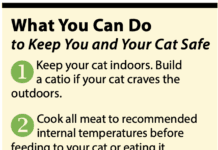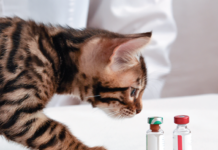For many pet owners, the realization that a cat will require medicating – even for just a few days – is enough to cause serious apprehension. Though some felines are extraordinarily good when it comes taking their medicine, others are not. Cats can be notoriously difficult to capture, restrain and medicate; however, with the following expert tips, medicating a cat can be much less
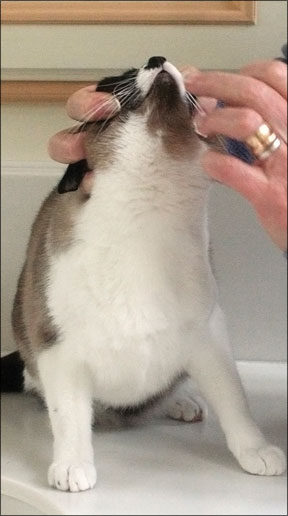
Bev Caldwell
288
stressful – for both cat and owner.
Step 1: The Right Mindset
“One of the biggest stumbling blocks for cat owners is the mindset with which they approach medicating their cats,” explains Jodi Korich, DVM, the director of Partners in Animal Health at Cornell Universitys College of Veterinary Medicine. If you are nervous about medicating your cat or perhaps youre feeling incredibly worried because your kitty is ill, your cat will pick up on this. “You have to approach medicating your cat with the mindset that you are doing this for the cats own good, working calmly, quickly and not obsessing over the process,” recommends Dr. Korich. A positive, confident approach may make your cat feel more secure.
Step 2: Catching the Cat
“Cats are smart. Cat owners need to be even smarter,” says Dr. Korich. When your cat is in a smaller room with doors that can be shut, close him in the room and calmly scoop him up. You can also entice him into different areas of your home using different items, such as favorite toys and treats.
Important: Do not try to capture your cat while he or she is using the litter box, cautions Dr. Korich. “If the cat associates [the stress of] medicating with using the litter box, it may start avoiding the box and will find another place, such as behind the couch, to eliminate,” she explains. Also, dont try to corner your cat while it is eating; this could cause the cat to stop eating, in order to avoid being medicated.
Step 3: Safely Restrain Your Kitty
“Its important to hold your cat safely so you dont get hurt – or your cat,” emphasizes Dr. Korich. Choose a raised surface like a counter or table: “This takes your cat out of their natural
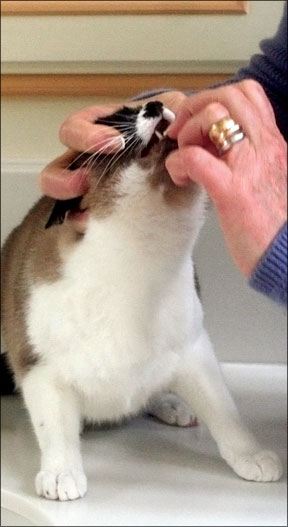
Bev Caldwell
288
environment, giving you the advantage, and the slippery surface makes it hard for your cat to get enough traction to escape,” says Dr. Korich.
If you have someone who can help you, have your assistant hold both of the cats front legs from above (at the shoulder), while backing the cats rear end into your assistants stomach. If you dont have anyone at home to help you, try placing your cat with its rump in the corner of a room. This will help prevent the cat from trying to scramble backwards and immobilizes the front legs, preventing you from being scratched. A towel placed on the cats back and lightly crossed in front of the neck can give you added protection from the claws.
“Every cat has its own personality and each owner has a unique relationship with his or her cat,” says Dr. Korich. “Dont be afraid to try something else, because another technique might work best for your particular cat,” she says.
Pilling Protocols
Prepare the pill with a coating of butter to make it slicker, more palatable and easier to swallow. If you prefer, you can apply a thin coating of peanut butter on the pill, which will help mask an offensive or bitter taste and makes it more difficult for the cat to spit out the pill.
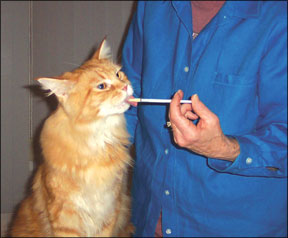
Bev Caldwell
288
Finger method: With the pill between your index finger and thumb, take your other hand and place it over the top of the cats head and tilt the head backwards: This will cause the lower jaw to open slightly. Use the tip of your index finger to push the lower jaw completely open and quickly insert your finger into the back of the mouth, pushing the pill onto the very back of the tongue. Remove your fingers and hold the mouth shut for a few seconds. You can gently stroke under the cats chin to encourage it to swallow. Sometimes, gently blowing on the cats face can induce a swallow.
“Wait for the cat to lick before letting go of the chin,” says Dr. Korich, noting that licking is associated with swallowing. Once the cat has swallowed, release the cat and watch for a few seconds longer to make sure the cat doesnt spit the pill out. If all is good, reward the cat with a favorite treat and lots of positive attention.
Pill popper method: For cats with a tendency to bite, or owners who have difficulties placing the pill far enough back on the cats tongue, Dr. Korich suggest using a “pill popper.” The pill is loaded into the rubber tip of the straw-like instrument, placed into the cats mouth, and with a push of the plunger, the pill is deposited onto the back of the cats tongue.
Extra Advice
Some cats are not safe to medicate, says Dr. Korich. “If you feel youre putting yourself at risk, talk to your veterinarian. In many cases there are alternatives,” she relates, such as reformulating the medicine into a liquid with flavor additives to appeal to cats. Or, a transdermal patch may be an option. Sometimes owners can bring their cat to the veterinary hospital at periodic intervals for medication injections.
Most importantly, do not simply give up and not medicate your cat. The medicine is being prescribed for a reason. “If you are having difficulties, you need to communicate with your veterinarian,” emphasizes Dr. Korich, adding that owners should never feel uncomfortable discussing why the cat is not allowing itself to be medicated: “Dont be embarrassed. Your veterinarian has heard it all, and he or she will be able to come up with a solution that will work for you.”
Extra help: Cornell University’s College of Veterinary Medicine offers an educational video that provides a step-by-step instructions on how to give medications to cats. The free video can be accessed online through the Colleges Partners in Animal Health website at: www.partnersah.vet.cornell.edu.

